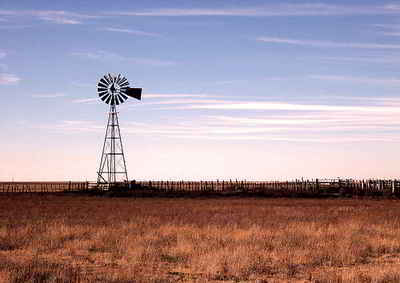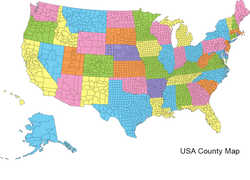Texas Counties
Texas is divided into two hundred and fifty-four counties, more than any other state. Texas was originally divided into municipalities, a unit of local government under Spanish and Mexican rule. When the Republic of Texas gained its independence in 1836, there were 23 municipalities, which became the original Texas counties. Many of these would later be divided into new counties. The most recent county to be created was Kenedy County in 1921. The most recent county to be organized was Loving County in 1931Upton County, Texas
Upton County Education, Geography, and History

Upton County is a county located on the Edwards Plateau in the state of Texas. Based on the 2010 census, its population was 3,355. Its county seat is Rankin. The county was created in 1887 and later organized in 1910. It is named for two brothers: John C. and William F. Upton, both colonels in the Confederate Army.
Etymology - Origin of Upton County Name
John Cunningham Upton and his brother William Felton Upton, two lieutenant colonels in the Confederate army; John Upton was killed at the Second Battle of Manassas and William Upton later served Fayette County in the Texas Legislature
Demographics:
County QuickFacts: CensusBureau Quick Facts
UptonCounty History
Indigenous peoples were the first inhabitants of the area. Later Indian tribes included Comanches, Apache.
One of the first routes bringing people through the area was the Chihuahua Trail connecting Mexico's state of Chihuahua with Santa Fe,
New Mexico. The trail served as a trade route for nomadic tribes of Indians and Spaniards, as well as traders from both Mexico and Texas.
The Butterfield Overland Mail crossed the area 1858-1861.
Cattle drive Goodnight-Loving Trail. served cowboys 1866-1888. The trail began at Young County, Texas and passed along the Pecos River, Fort
Sumner, New Mexico, and Colorado before ending in Cheyenne, Wyoming.
Upton was formed in 1887 from Tom Green County, Texas.Its county seat is Rankin. The county was named after John C. Upton and his brother
William F. Upton. of Tennessee. Cattleman George Elliott became the first to establish a homestead in Upton County in 1880
Handbook of Texas Online
The area that is now Upton County was traversed during the early nineteenth century by Comanches and Apaches, who
competed for hunting grounds in the area. Both tribes were superior horsemen, capable hunters of buffalo
and other game, and relentless raiders of their neighbors. Despite their considerable achievements in material
culture and adaptation to their environment, the Indians lost their domination of the region to the United States
Army and the advancing tide of white settlers in the 1870s and 1880s. In the 1860s the Chihuahua Trail from Mexico
to Indianola, Texas, a significant trading route, crossed the region, as did the route of the Butterfield Overland
Mail (1858-61), and the Goodnight-Loving Trail. Originally part of the Bexar
Territory, the area was part of Tom Green County from 1874 until 1887, when Upton County was established. One of the
earliest settlers was Dr. George W. Elliott, who moved into the area in 1881 and drilled the first well; he reached
water at thirty feet. The area was part of the open range until the 1890s, when sheepmen crossed the Pecos River to
compete with cattlemen for the range. The United States Census counted fifty-two people living in the county in
1890, and only forty-eight in 1900; most of these belonged to the families of Arthur F. Schnaubert, Frank Inghram,
and Jim O'Bryan, or were hired cowboys and ranch hands. According to the agricultural census for 1900, there were
eighteen ranches that year; almost 39,000 cattle were reported, but virtually no crops were grown. The area began to
attract more settlers in the early twentieth century. In 1900 and 1901 open range cattlemen started selling their
holdings, and the state encouraged the sale of school and railroad lands for settlement. Rancher Henry M. Halff
tried to develop an irrigation area for cotton and vegetable raising and sold town lots at Upland for the price of a
notary fee. Upland opened a public school in 1908. By 1910 there were 105 ranches or farms in the area, and the
population had increased to 501; the county was organized that year, and Upland became the county seat More at
William R. Hunt and John Leffler, "UPTON COUNTY," Handbook of Texas Online (http://www.tshaonline.org/handbook/online/articles/hcu02),
accessed January 24, 2016. Uploaded on June 15, 2010. Published by the Texas State Historical Association.
Geography: Land and Water
As reported by the Census Bureau, the county has a total area of 1,242 square miles (3,216 km2), of which,
1,242 square miles (3,216 km2) of it is land and 0 square miles (0 km2) of it (0.01%) is water.
Neighboring Counties
Bordering counties are as follows:
- Midland County (north)
- Reagan County (east)
- Crockett County (south)
- Crane County (west)
- Ector County (northwest)
Education







